Client:Water Plus
Industry:Energy and Utilities
Region:Europe
Getting the RPA foundations right leads to quick results—and customer benefits

21
software robots
13
processes automated
567,000
transactions processed by the robots in 2021
Client Overview
Formed in 2016, Water Plus is the largest water retailer in the United Kingdom (UK). It provides water retail services including billing, meter reading, customer service, and technical water services to businesses, the public sector, and other organizations, including charities across England and Scotland. Having a single water retailer offers value to national companies, such as supermarkets, manufacturers, and distributors, which have many sites throughout the country.
Water is a precious resource that must be carefully and efficiently managed, to reduce water waste and lower environmental impacts. So more businesses, public sector organizations, and charities could gain greater benefits, including saving more water, the water market in England was opened in April 2017. This allowed them to opt for a water retailer that best meets their needs.
As this change took place, Water Plus was created, along with other water retailers. It remains the largest in the UK, with the largest number of customer sites across England and Scotland, and employs around 500 people in roles that can involve handling a variety of data, which needs to be processed efficiently, to meet requirements in the industry for all water retailers.
This entails transferring lots of data from previous suppliers and gaining initial meter readings from customers, before offering ongoing support, advice, meter reading, and billing for water retail services. As water retailers liaise with all the water wholesalers in England and Scotland, it can be a dynamic and, at times, complex industry.
The early days of automation
The complexity led the business to consider ways to streamline processes and improve its efficiency as a water retailer. It included a foray into robotic process automation (RPA). “Our automation journey started before my team was even created,” says Andy Scarr, Innovation Centre of Excellence (CoE) Lead, who now has responsibility for automation in the organization.
“We had a couple of activities that were automated by a third-party contractor,” he explains. “At this stage, RPA was seen as an experiment. People wanted to try it and see if it worked. And it did, delivering benefits quite swiftly.” One process was dedicated to reducing backlogs in data processing. The other improved the speed information could be updated on central market systems.
“When the CoE was formed in January 2021, the team was just me and a developer,” Scarr smiles. “We inherited these two automations and saw it as a huge opportunity to grow. We had the whole organization in front of us.”
He’s quick to point out that his role wasn’t to build software robots just for the sake of it. It may have started experimentally, but his Chief Technology Officer (CTO) was clear that the team had to meet business needs. “The robots needed to serve a purpose, rather than a purpose being found for them,” Scarr recalls.
Using RPA at Water Plus has also led to more opportunities for developing people—with two apprentices in the CoE team at Water Plus, who started in September 2021.
Going back to first principles
He was keen to make sure he started as he meant to go on. “We looked at the two robots we had. They were great and did what we wanted, but perhaps weren't built in a way that gave us a great foundation to develop further. We wanted to expand what we could do with robotics to support continuous business improvement—and to be as efficient as we could be in our processes and when serving our customers.”
To solve this, the team embarked on a journey of reviewing and improving. “They needed to be rebuilt for our environment so we could expand quickly and effectively.”
From day one, flexibility was built in. The software robots had to be modular, allowing the team to create automations from building blocks, depending on the needs of the business. It was vital groundwork and needed more people, not least because as the work began, ideas began to flood into the team.
Idea’s machine
“Word got out about what we were doing and lots of great ideas started coming in. People saw how automation could support them. There was no need for incentives.” Very quickly, another full-time employee and two apprentices joined, so the CoE could cope with the workload. By April 2021, they were developing the ideas into software robots.
Governance is of paramount importance. The CoE has a focus on making sure automations meet the requirements set by the CTO. To achieve this, there are rules to follow.
The ideas come from the operations side of the business—the agents and their managers. We review these and work out if robots can assist while ensuring they’re offering benefits vs costs.
Andy Scarr • Innovation Centre of Excellence (CoE) Lead
Putting software robots to work
The first software robots Scarr’s team created undertook customer onboarding. “When we win a new client there are certain tasks that need to be completed, but which differ slightly each time. We may need to work with another water retailer to transfer the details to us. It can take time and be quite a dynamic process. The customer may not see much change, but there’s a lot going on in the background to make it as smooth as possible—and so central market information can be updated and kept current.”
It’s this behind-the-scenes work where software robots excel. They enter data and keep processes moving, allowing agents to add more value to customers in their roles, improving customer experience. Historically, agents manually completed these tasks.
Backing from the whole business
Introducing RPA can sometimes cause worry among a workforce. People may mistakenly think it’s going to take their jobs. Scarr has always been keen to emphasize that automation removes repetitive tasks, freeing people to do other, higher-value things.
We’ve been clear from day one that RPA releases people, not replaces them.
Andy Scarr • Innovation Centre of Excellence (CoE) Lead
Water Plus management has backed RPA from the top down, which has also helped. They strongly believe it’s a technology that can help agents achieve more, supporting them further in their roles. And people have taken software robots to heart as a result.
Staff have confidence in what they do. They’ve welcomed them on the team and given them names. We clearly have some Star Wars fans because R2-D2 and C3PO now work for us.
Andy Scarr • Innovation Centre of Excellence (CoE) Lead
Results to be proud of
By the end of 2021, just one year after the creation of the CoE, the Water Plus automation program had grown from two inherited processes to 13, run by 21 software robots, managing half a million transactions. “It was a challenging time, with a steep learning curve. But we’ve achieved a lot in twelve months and set some strong foundations for the future,” Scarr says with pride.
And his pride is justified. The CoE has hit its target to deliver benefits including improvements in operational efficiency. Astoundingly, the team was already well on its way to achieving its initial targets by February 2021 by identifying half the processes it must automate to reach the goal.
When asked what tips he’d give to others embarking on their RPA journey, Scarr pauses, to give it thought, before reiterating his mantra, “Start as you mean to go on. Get the right foundations in place and set things up for the future. For us, this has meant creating software robots that are modular, generic and can be applied in diverse ways.”
He also reiterates his commitment to good planning. “Get the right information upfront when creating a robot,” he cautions.
“Development is easy once you have all the information you need. It’s then a matter of making sure it meets the needs of agents and is rolled out carefully in what we call a hyper-care phase.”
Thorough testing is also important, Scarr says.
Carrying out thorough testing will give you reassurance and prove things will work smoothly, before increasing the volume the robots work. Having clear routes for exception management is also a must. Before any testing, it’s advisable to carry out additional checks on data files that will be fed into the robots - and continuing to do this at regular points in your journey and when they’re in live environments, to continue with smooth operation.
Andy Scarr • Innovation Centre of Excellence (CoE) Lead
Strong governance and management are crucial points. Because meeting the needs of staff is at the heart of RPA. By freeing them to focus on higher-value work, everyone wins. Customers get better service, staff are more fulfilled, and the business thrives. And while we all need to carefully manage the precious commodity of water, we must also carefully manage and respect people. With RPA, Scarr and his team are doing just that.
Want to hear more? Listen to Water Plus share their success story in this fireside chat.
Related case studies
Ready for your own case study?
Speak to our team of knowledgeable experts and learn how you can benefit from agentic automation.





